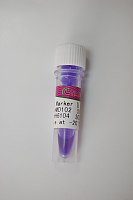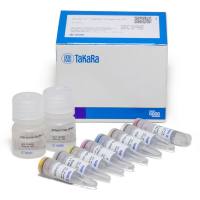Screening for Mutations in DNA by Single-Stranded Conformation Polymorphism (SSCP) Analysis
互联网
286
A single-stranded DNA fragment may adopt several different conformations (conformers) which affect its electrophoretic mobility. The mobility of single-stranded DNA in a nondenaturing gel is dependent on both fragment length and secondary structure, which is sequence-dependent. As a result, changes in sequence may affect the conformation of the single-stranded DNA and under appropriate conditions, the differing conformations can be resolved from each other, thereby allowing an underlying sequence variation to be detected. The detection of sequence variations/mutations by studying the mobility of single-stranded DNA was first described by Orita in 1989 (1 ) and the technique is known as single-stranded conformation polymorphism (SSCP) analysis. There are countless modifications of the original technique, all of which attempt to increase the number of sequence variations that can be detected. One such modification, included in this chapter, involves the use of Mutation Detection Enhancement (MDE) gels.









